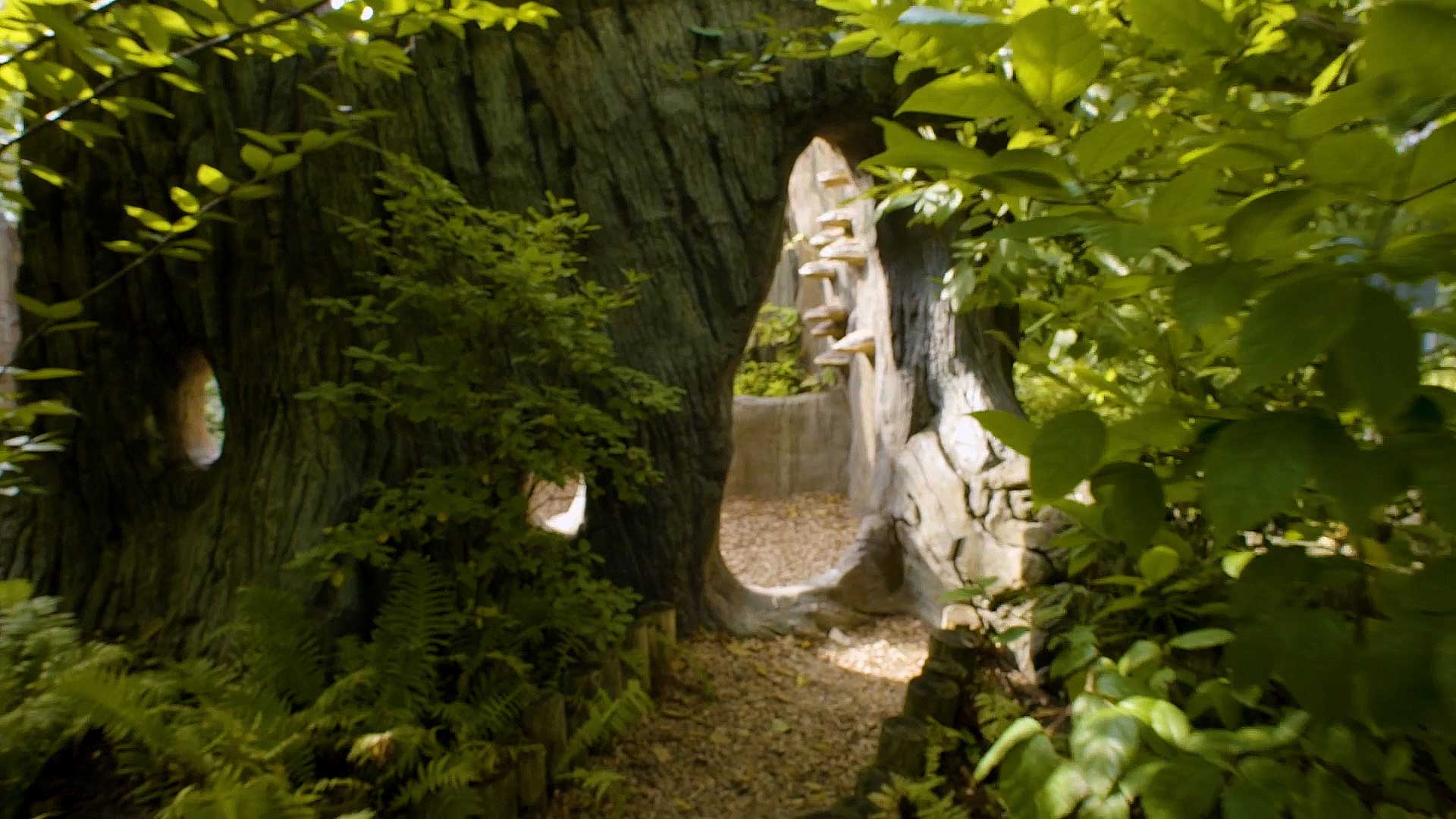
The Children’s Garden is designed for visitors to imagine what it’s like to be the size of a tiny insect.
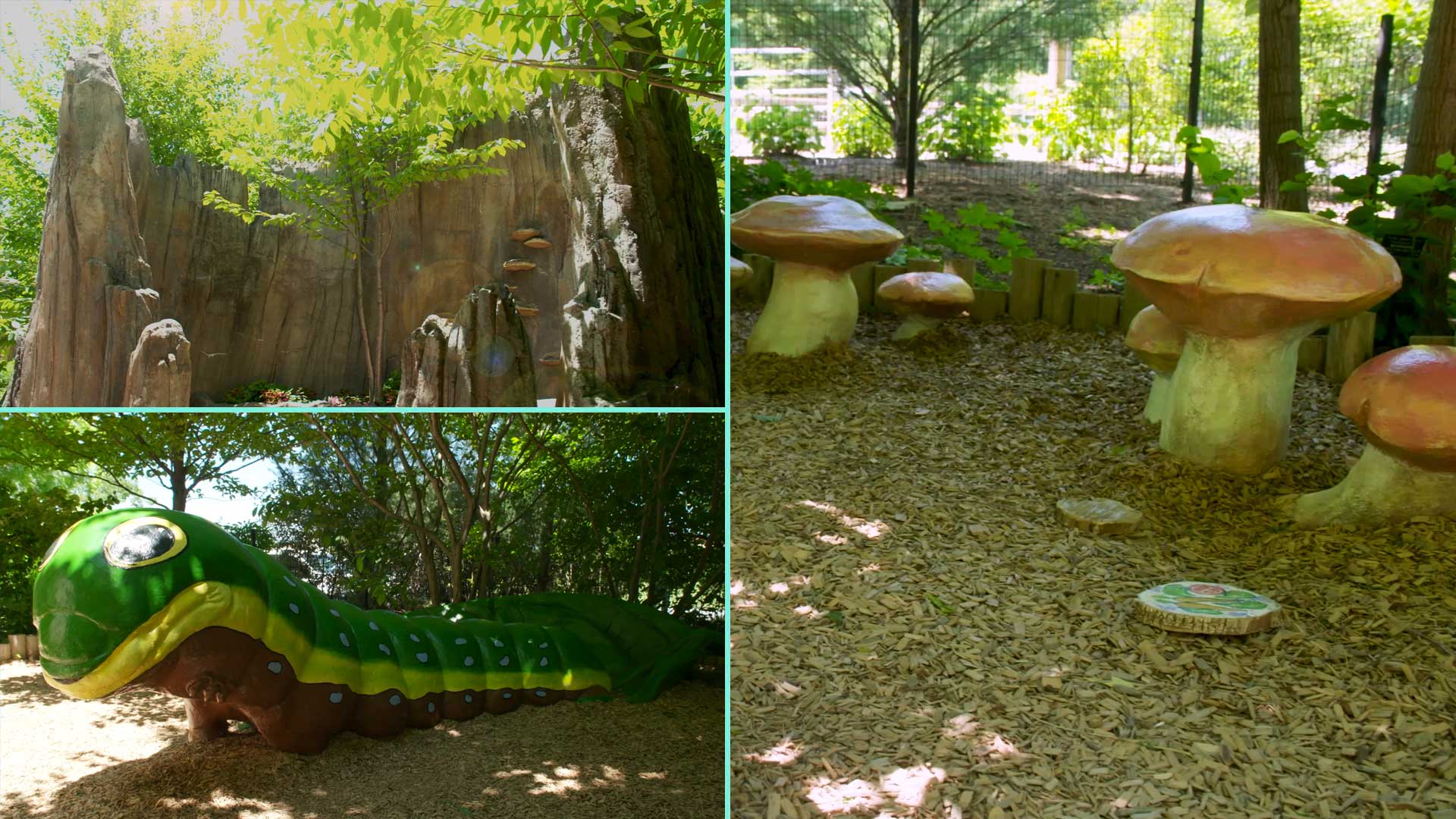
There is a giant tree stump, enormous Bolete mushrooms, and a giant caterpillar.
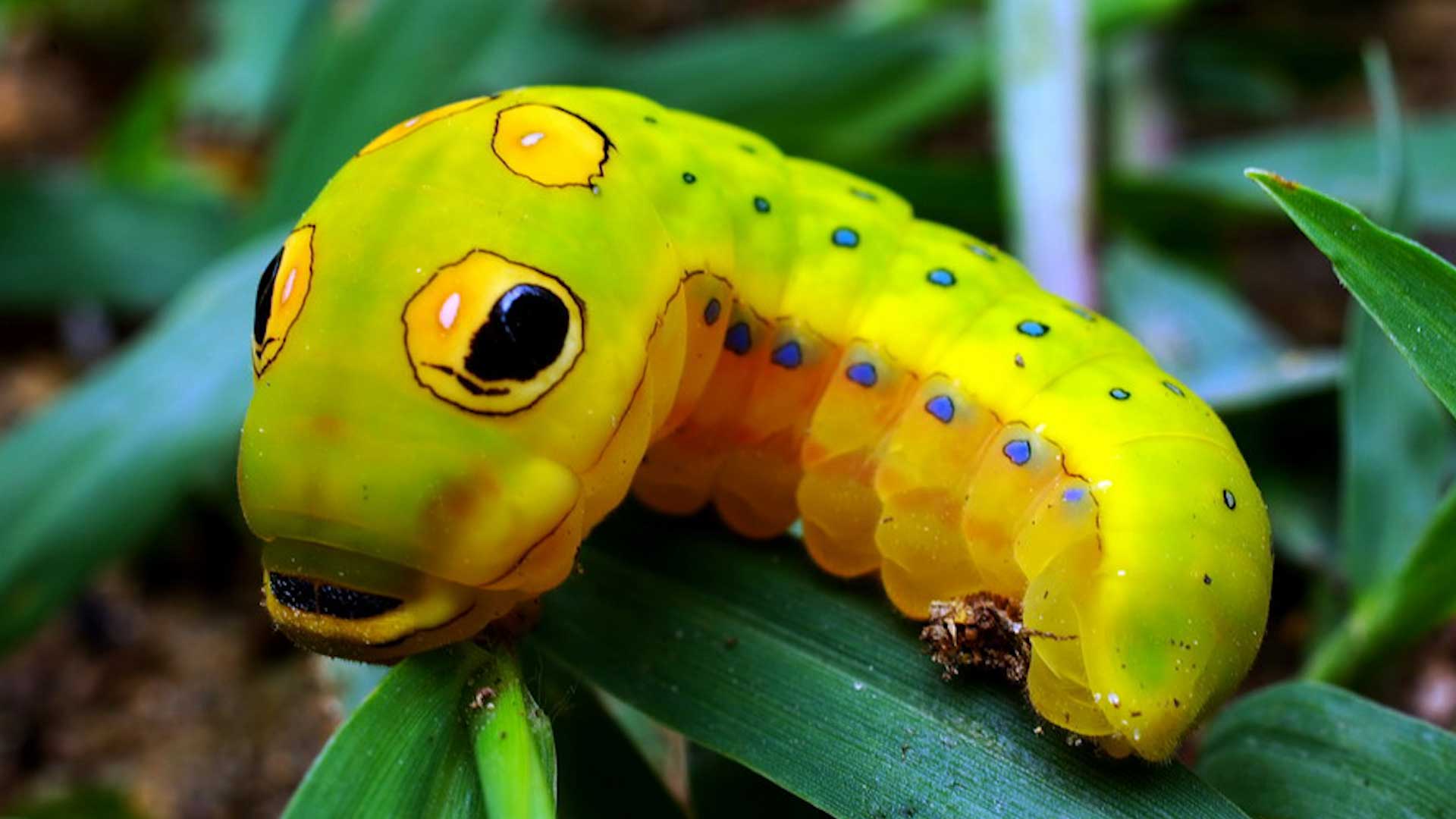
The Children’s Garden is full of sculptures of native Pennsylvanian animals, so a real caterpillar was chosen to be the featured sculpture: the Spicebush Yellowtail.
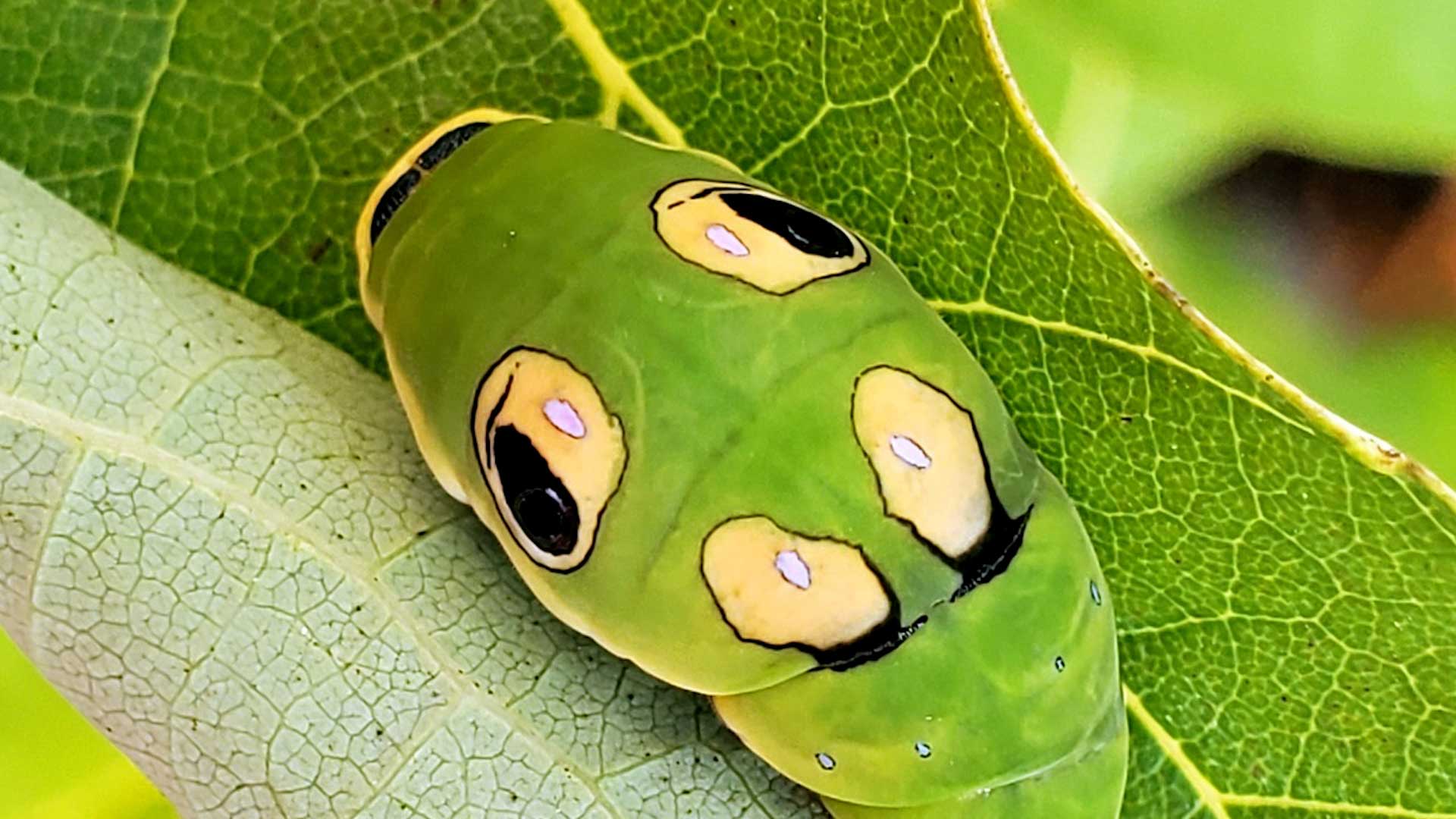
Spicebush Yellowtail caterpillars have enormous yellow spots on their heads that look like eyes. Their real eyes are on the sides of their heads. The yellow spots are thought to be useful for scaring away predators.
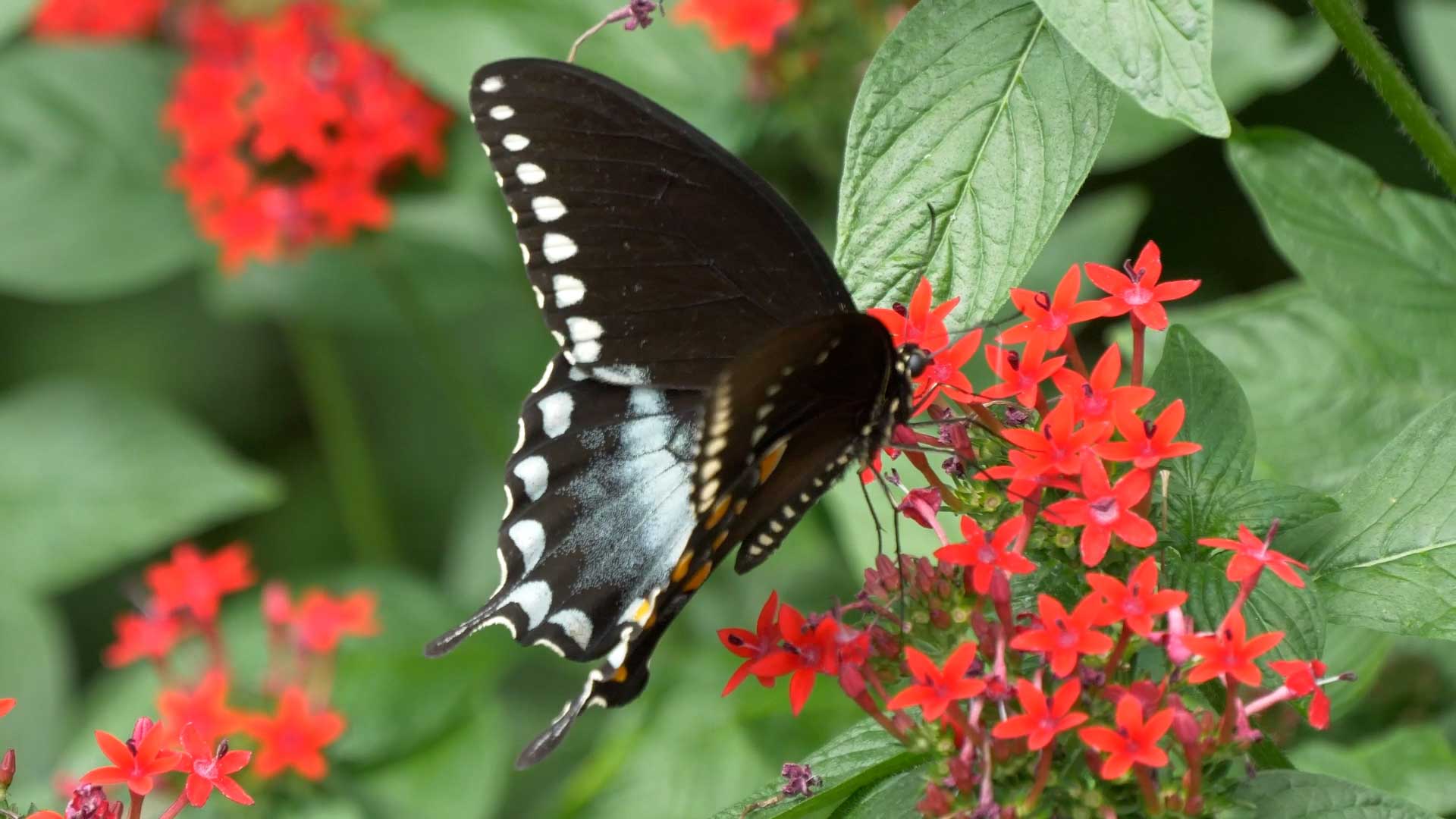
When the Spicebush Yellowtail caterpillar grows up, they transform into black and blue butterflies that feed on a wide range of flowers.
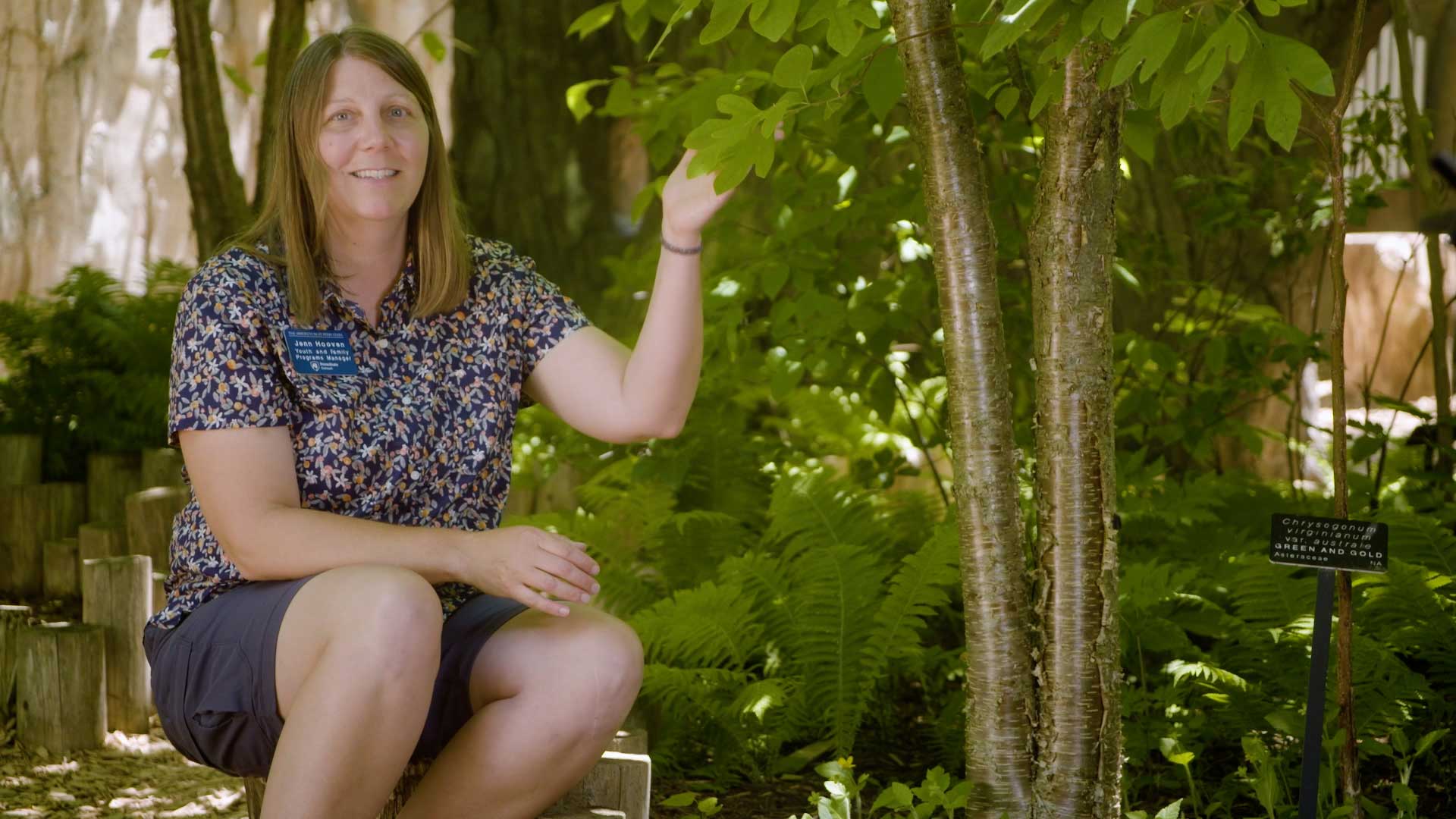
These caterpillars are very picky eaters. They can only survive on a diet of leaves from a few types of trees: Redbay (which doesn’t grow in Pennsylvania), sassafras and spicebush, which are planted here at the the garden.
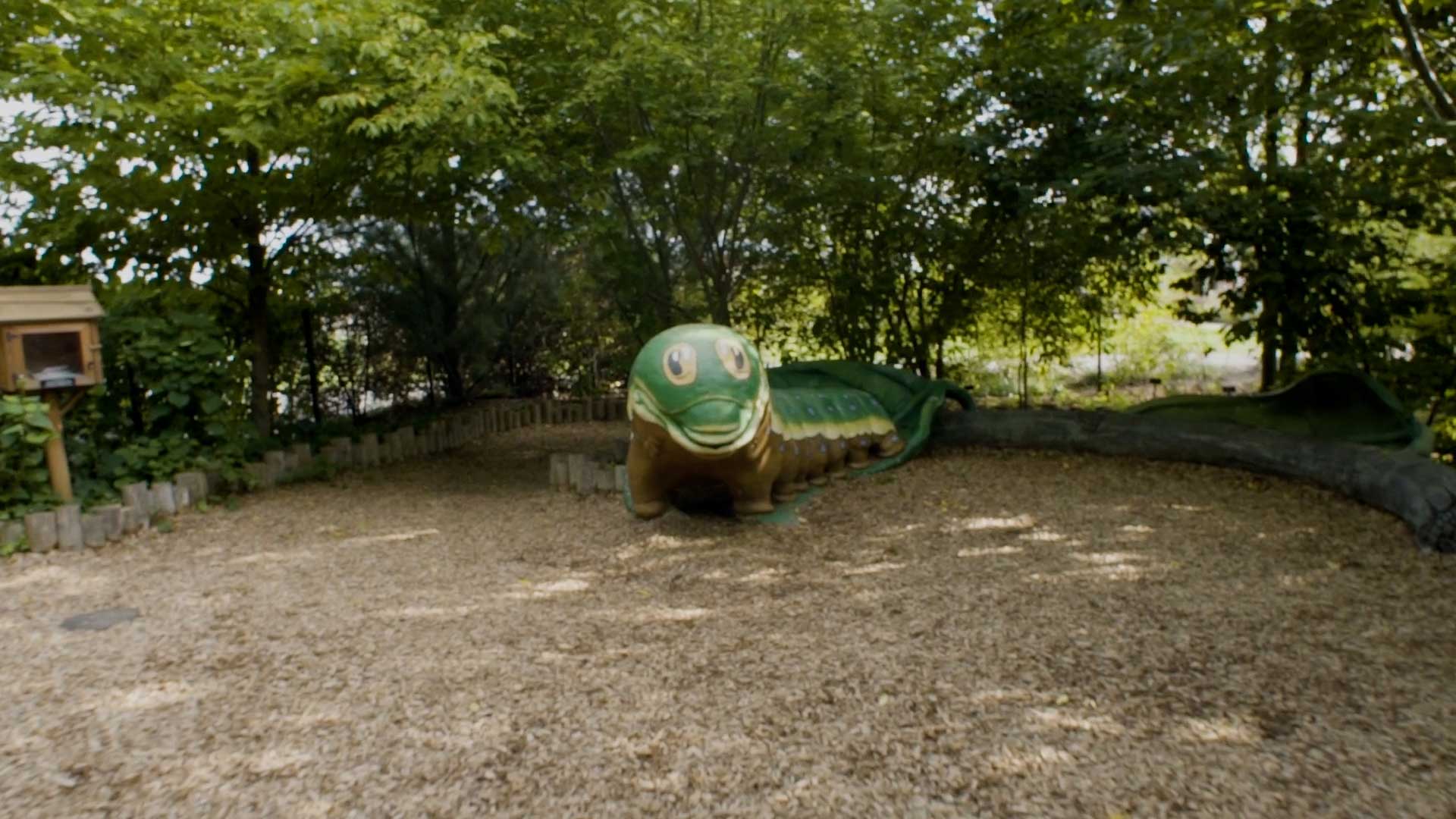
The Children’s Garden giant caterpillar is sitting under a grove of real Spicebush plants.
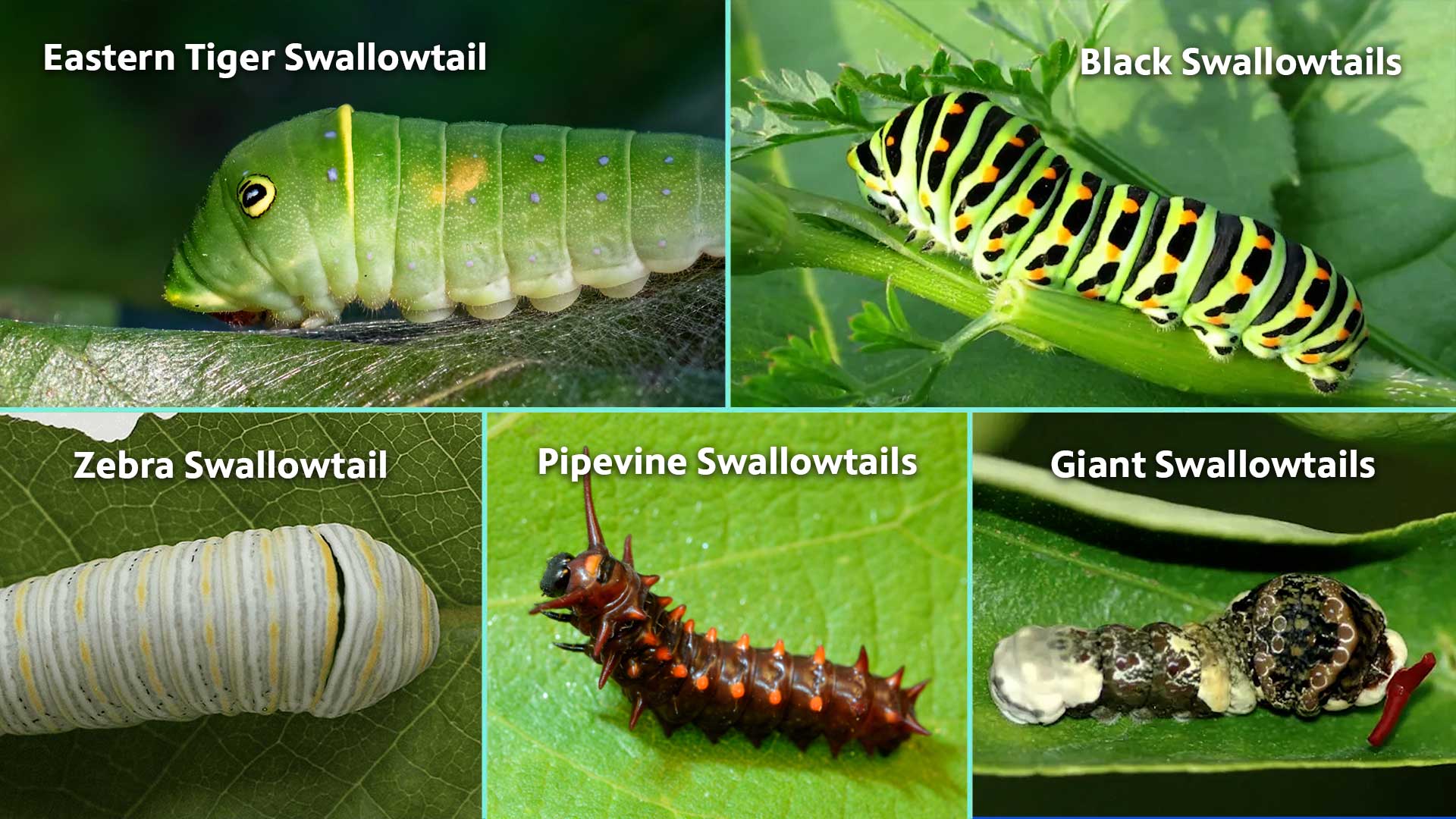
There are lots of different species of swallowtails in Pennsylvania: Eastern Tiger Swallowtails, Black Swallowtails, Zebra Swallowtails, Pipevine Swallowtails, and Giant Swallowtails.
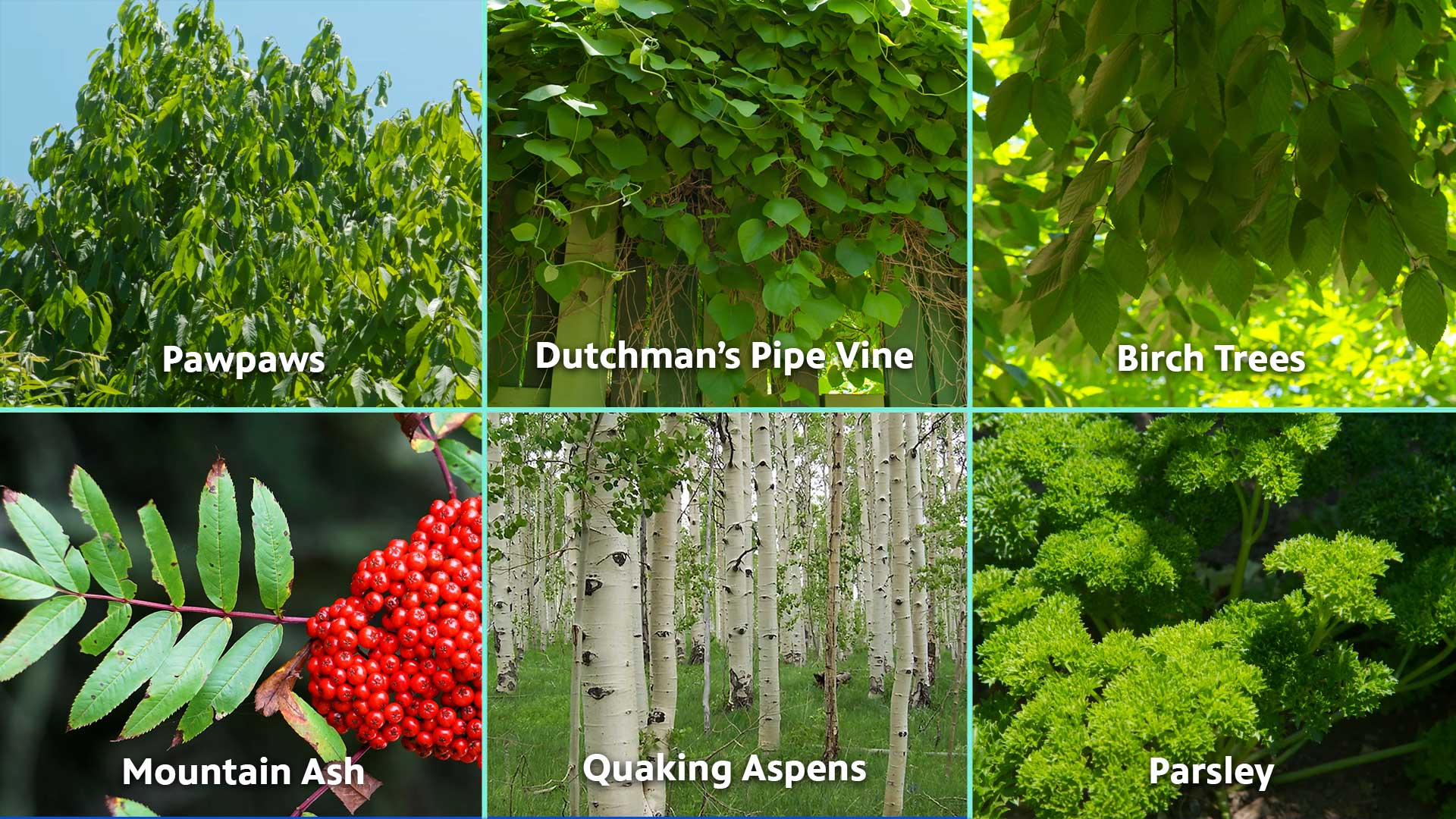
If you want all the different types of Swallowtail caterpillars to visit your garden, you have to plant a lot of different types of plants. There are Pawpaws, Dutchman’s Pipe Vine, Birch Trees, Mountain Ash, Quaking Aspens, and Parsley planted all around the Children’s Garden.
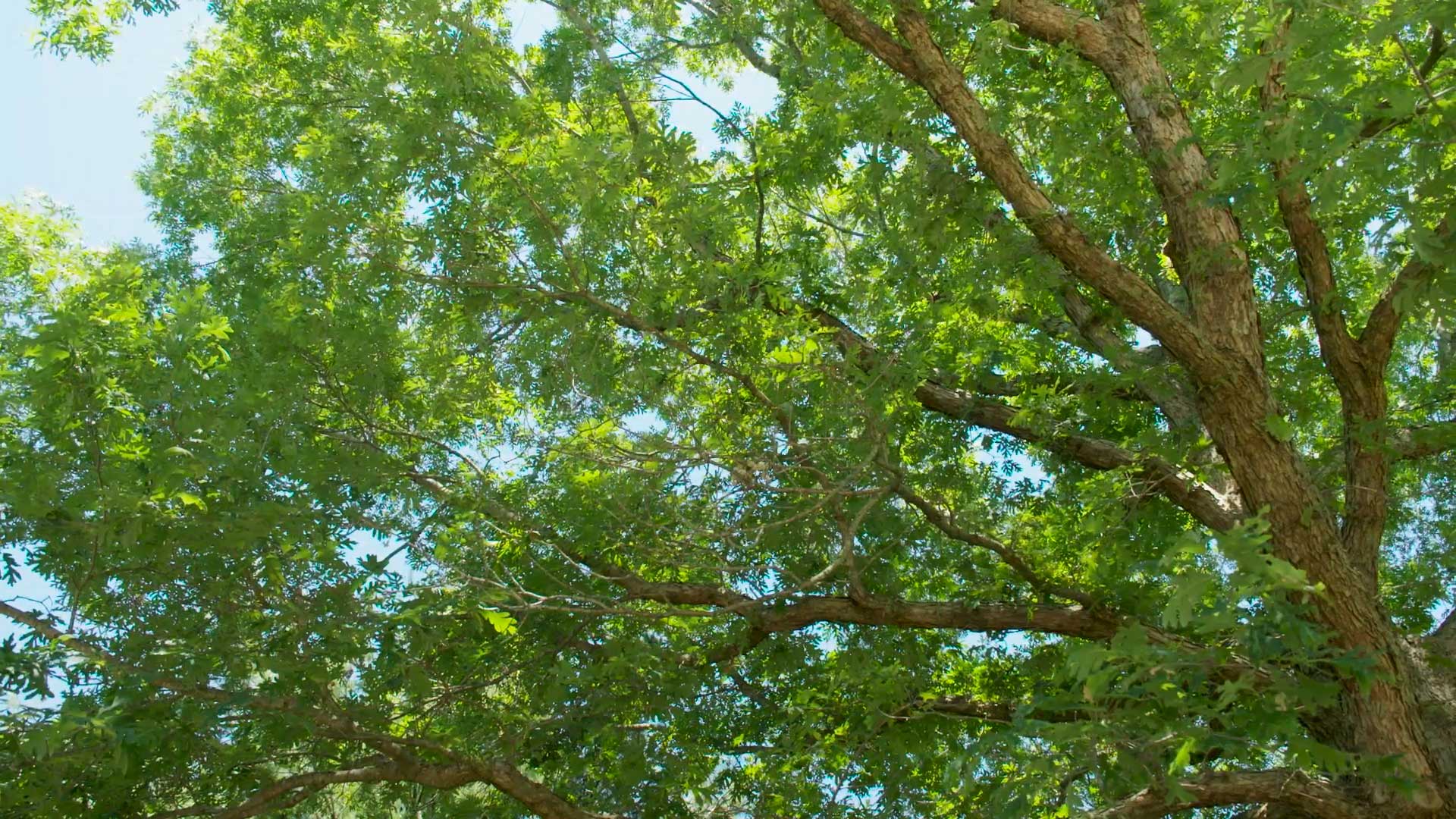
Most plants support more than just one type of animal. The White Oak was the first tree planted at the Arboretum. Oaks support many different types of Native insects. The average lifespan of a White Oak is around 300 years.
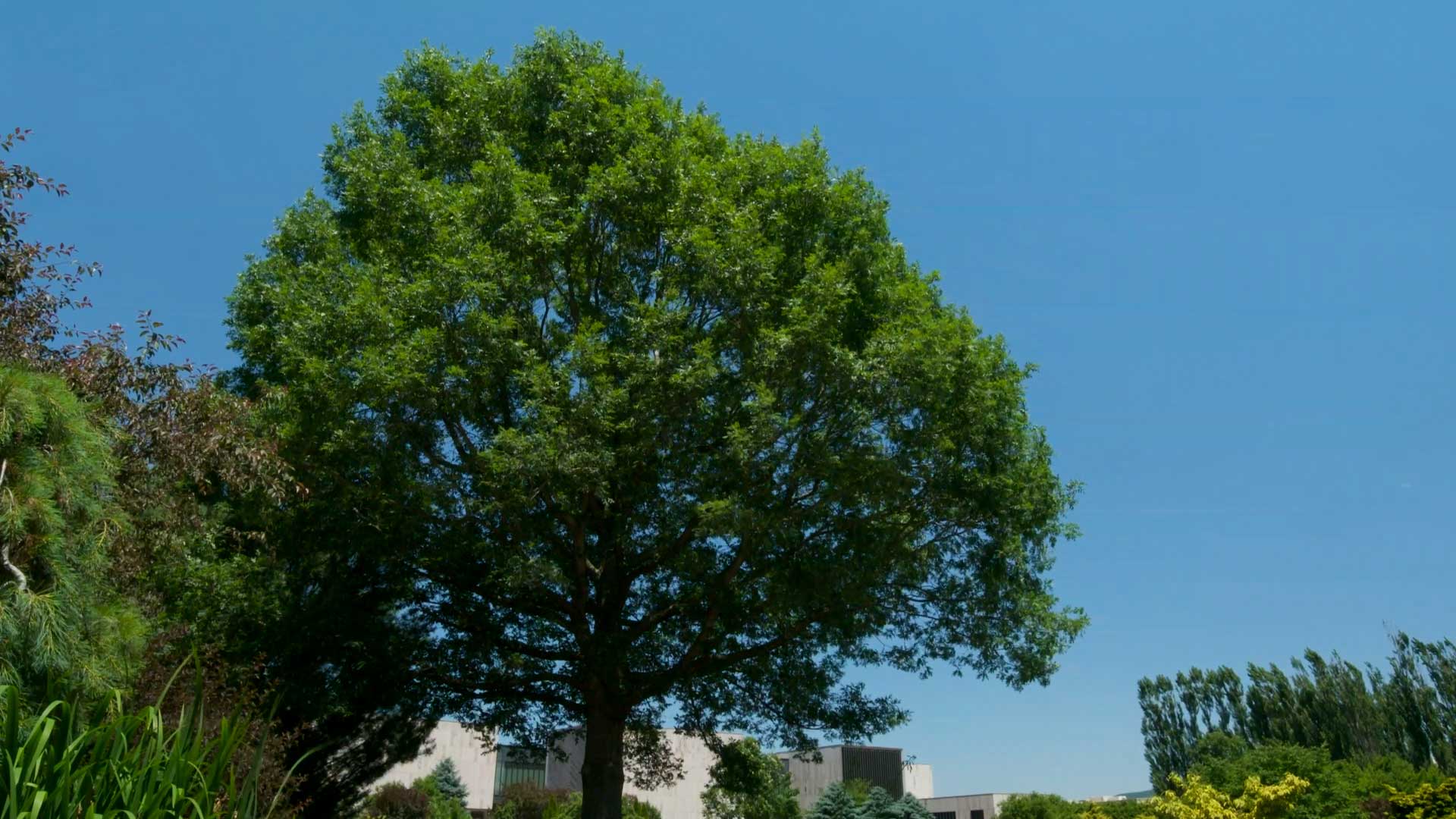
Just imagine how many generations of insects, birds, and mammals a single White Oak can support in its lifetime? You don’t have to think 300 years into the future every time you plan a garden. But every plant has its own story and special relationships with the animals and other plants around it.